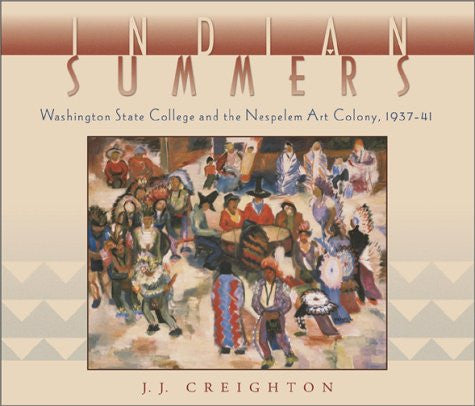-
Indian Summers: Washington State College and the Nespelem Art Colony, 1937-41
Washington State University (WSU) Press
-
$10.24
-
is back-ordered. We will ship it separately in 10 to 15 days.
-
-
Description
J.J. Creighton is an independent historian and researcher. Two excerpts from Chapter Four: The People of the Colville Confederated Tribes In June 1937, the students and instructors from Washington State College descended on Nespelem on the Colville Reservation. It must have been a memorable moment for the Confederateed Tribes, seeing this entourage coming into town equipped with easels and canvases, paint boxes, and the like. Here, the WSC group would spend the next eight weeks recording part of a history that was largely unknown. The Nespelem setting had a distinctive atmosphere, which means everything to the artist. Located in north central Washington, the large Colville Reservation is bound on the south and east by the Columbia River, by the Okanogan River to the west, and the Okanogan National Forest to the north. The landscape consists of the vast Columbia River canyon and rolling sagebrush praries and hills in the southern part of the reservation, gradually turning to forested uplands and mountains farther north. The geology is diverse; rimrock canyons, granite punch bowls, and glacier cut peaks are a part of the spatial domain. It was a unique place where a group of enthusiastic artists would be initiated in the ways of a culture that had been long misunderstood by most modern white Americans. For many of the students, this was their first encounter with Native Americans, hence there probably was a good deal of apprehension on their part. Members of the numerous tribes and bands that inhabited the reservation no doubt had the same feelings. The majority of Indians were more than accomodating to the visiting "bohemians" from WSC; there were others, however, who kept their distance and entirely resisted any kind of contact. For the WSC group, their previous perceptions about Indians were eventually laid to rest, the foremost being that all Indians were culturally the same. Hollywood movies and popular fiction seldom made distinctions as to differences in culture when portraying Native Americans. The tribes and bands that made up the Colville Reservation, indeed, exemplified inherent differences, rather than the preconceived sameness believed in by so many non-Indians. ----- ...Though female Indians often are overlooked by history, they were revered by the students, the majority of whom themselves were women. Though frequently not identified, the Indian women sitting for portraits often were of important tribal lineage. From the aged to the young, they were sought out to pose. In 1937 one of the young girls who sat for portrait work was Bertha Awhi of Yakama-Moses descent. She had been born in Nespelem in 1926. In 1997 - nearly six decades after the art colony period - she spoke fondly of her interaction with the artists and appeared pleased to have the long forgotten story told. Bertha served as an interpreter for the students and Indians, particularly for the Awhi family, a number of whom posed for portraits.

